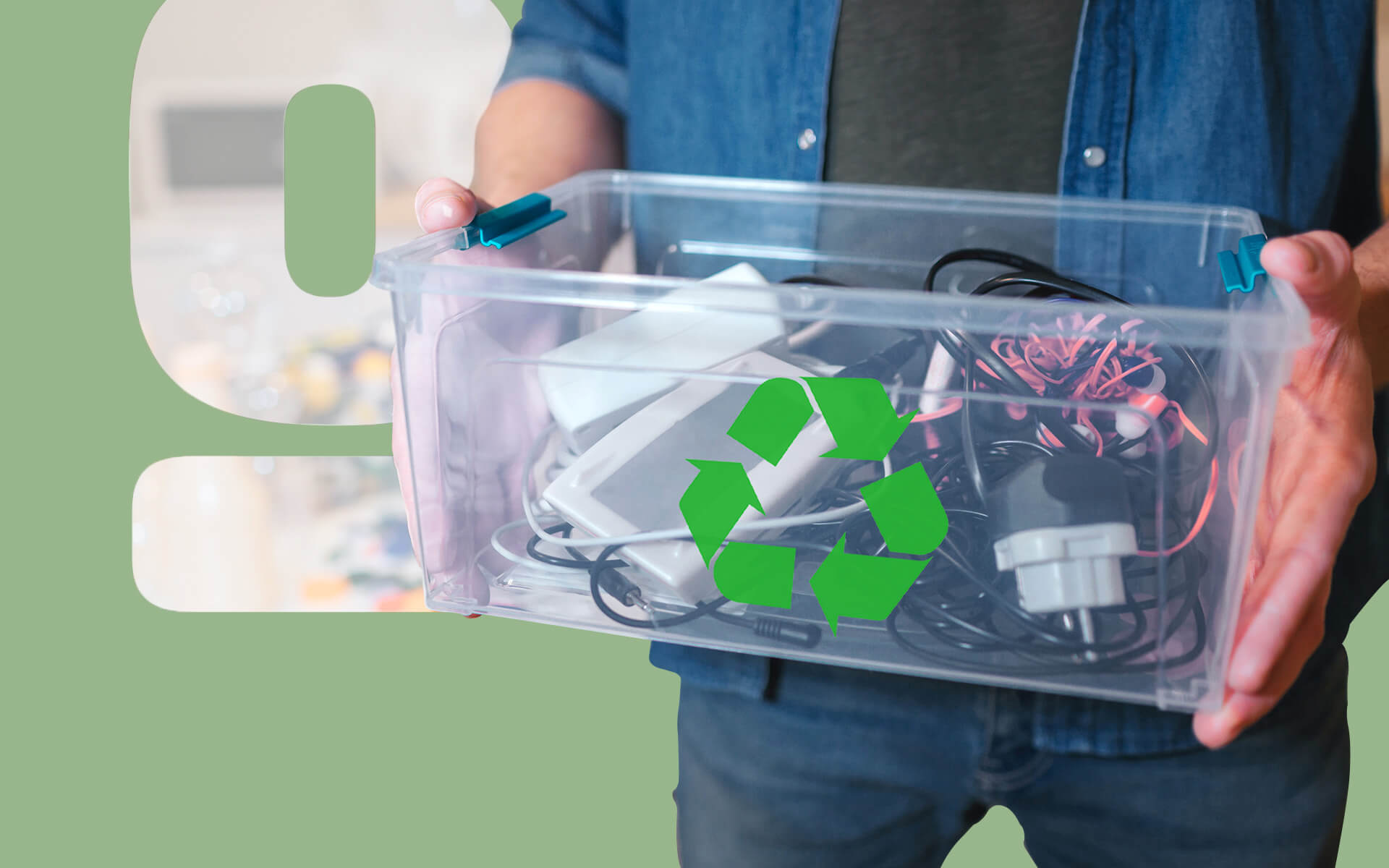
Efficiently Disposing of E-Waste
We are reader-supported. When you buy through links on our site, we may earn affiliate commission.
In the modern era, society values the convenience and security of technological devices — the disposing of e-waste isn’t instinctual. Most Americans have smartphones and appliances because of the benefits they offer. Keeping up with technological advancements is another interest among individuals, producing excessive quantities of electronic waste (e-waste).
Conventional electronic production and disposal methods interfere with President Biden’s new sustainability goals. He initiated a national carbon neutrality plan, decreasing atmospheric and municipal solid waste. Society can help achieve the goal by efficiently minimizing and disposing of e-waste.
What is E-Waste?
Before we assess the sustainable disposal methods, we must evaluate e-waste as an independent concept. E-waste signifies electronic items at the end of their life cycle. Donated, recycled and thrown away devices make up e-waste in America.
The Environmental Protection Agency (EPA) identified various issues within the e-waste sector, creating sustainability limitations. They also found consumers only recycle a quarter of their electronics, sending the remaining amount to landfills. Inefficient device production and disposal methods make significant impacts on the global ecosystem.
Ecological Challenges with Disposing of E-Waste
The environmental impacts of electronics begin in the manufacturing facilities. Most production centers run on fossil fuels, like natural gas, oil or coal. During the combustion process, the elements release greenhouse gases into the environment causing atmospheric alterations.
Earth relies on a specific composition of the atmosphere, producing and maintaining life-sufficient surface temperatures. Naturally, the planet absorbs solar radiation and creates heat, warming its surface. After the surface reaches a specific temperature, the atmosphere re-collects excess energy and sends it back to space.
The process produces the perfect ecological conditions to support the global ecosystem. When greenhouse gases invade the environment, they change the system by raising the atmosphere’s light-to-heat exchange rate. They also trap excess energy on Earth, filtering it back through the heat production process.
Over time, the enhanced greenhouse effect raises the planet’s temperature. As Earth becomes warmer, it experiences a ripple effect of ecological degradation, decreasing the global ecosystem’s stability. Another initial electronic pollution-producing practice derives from material mining.
One element found in most electronics is lithium-ion, supporting battery functions. When professionals mine for lithium, they disrupt the natural environment and release toxins into local ecosystems. Researchers monitored one lithium mine in Ganzizhou Rongda, exploring its effects on the regional ecology.
They found a significant increase in dead fish in a nearby river, as well as dead cattle and yaks. The mine was releasing toxins into the local water supply causing adverse health impacts on animals and aquatic species in the area. Outside of production, modern e-waste disposal methods also negatively impact environmental stability rates.
Common Ewaste Disposal Methods
When individuals picture e-waste, they generally think of the old phones, cameras and desktops littering their spare rooms. While the three devices make up a portion of waste, they are the easiest to refurbish and recycle. Other products like printers, microwaves, refrigerators and power tools are less recyclable, ending up in landfills.
In America, we outsource most of our electronic disposal processes and recycling. E-waste processing facilities send nearly 80% of their electronics to less developed countries like China or India. Once our e-waste reaches a center outside of the country, we are unable to regulate the handling practices and environmental impacts.
Some facilities in less developed nations break down old electrics to recover valuable materials. They use open-air burning techniques and acid baths to decompose excess components. Workers gain exposure to toxic elements and carcinogens during the process, like lead, arsenic, mercury, cadmium, brominated flame retardants, and more.
Releasing toxins into the environment degrades workers’ health and the local ecosystem. Fortunately, ecological researchers examined the e-waste disposal methods and impacts, developing sustainable alternatives.
Disposing of Ewaste Efficiently and Sustainably
When your electronics break or you upgrade your devices, there are ways to dispose of your e-waste sustainably. The first efficient method is reselling your outdated devices. There are many refurbishing stores and electronic-repair hobbyists individuals can sell their old appliances to.
Additionally, you can recycle your outdated electronics through credible processing companies. Half of America’s states have laws regarding e-waste recycling, ensuring the safety and legitimacy of the processes. Individuals can confidently hand their e-waste over to companies with the E-Steward label, signifying the sustainability of their practices.
Consumers can also shrink their carbon footprints, minimizing the adverse effects of e-waste by extending the lifespans of their products. Many electronic manufacturers and distributors entice individuals to invest in new products before their current one’s break. The overconsumption of new devices increases the number of emissions and municipal solid waste coming from electronic companies.
Instead of falling victim to corporate influences, individuals can use their current electronics until there are unrepairable. When you extend your device’s lifespan, you can significantly reduce adverse environmental effects.
The Best Ways to Shrink Your E-Waste Footprint
When you are ready to minimize your production and get better at disposing of e-waste, you can begin by identifying sustainable processing facilities in your area. It is also essential to remember the three “Rs” of recycling – reduce, reuse, recycle. Reducing your consumption of electronics is the most sustainable and effective way to shrink your footprint.
If your state lacks the legislation regulating e-waste recycling centers, you may send your electronics out of state to a reliable facility. You may additionally learn how to conduct your own repairs from home, reducing the cost and ecological impacts of recycling waste. Over time, reducing your consumption of devices and extending their lifespans can significantly decrease environmental degradation.
Share on
Like what you read? Join other Environment.co readers!
Get the latest updates on our planet by subscribing to the Environment.co newsletter!
About the author

Jane Marsh
Starting from an early age, Jane Marsh loved all animals and became a budding environmentalist. Now, Jane works as the Editor-in-Chief of Environment.co where she covers topics related to climate policy, renewable energy, the food industry, and more.





